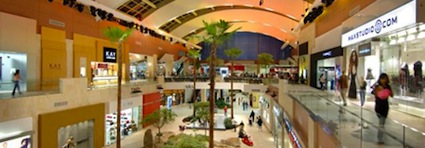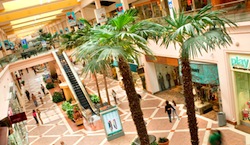Shopping Mall Giant Announces Solar Energy Projects

LOS ANGELES — Westfield Group, a retail property group known for its shopping malls, recently announced two solar energy initiatives totaling $6 million to be built in the Greater Los Angeles area.
Westfield Topanga and Westfield Fashion Square together will represent the latest and largest solar projects in the company’s U.S. portfolio, which includes 63 million square feet of retail space in 12 states.
The solar project at Westfield Topanga includes retrofitting the shopping center’s roof to accommodate more than 3,000 solar modules, which will generate about one million kilowatts per hour when fully functional.
The Westfield Fashion Square initiative includes the installation of more than 2,900 solar modules on the rooftop and carport and is expected to generate 1,400,000 kilowatts per hour.
“The solar initiative is part of Westfield’s overall efforts to have a positive impact in the communities in which its centers are located,” company officials said. “The solar energy at both centers will be used to offset the energy received from the grid.”
The projects will also deliver new jobs to the communities, according to the company.
Energy produced at the centers will be equivalent to eliminating carbon dioxide emissions from more than 189,000 gallons of gasoline consumed.
Local officials and utilities recognized Westfield’s proactive approach to sustainability.
“Westfield’s commitment to solar energy throughout Los Angeles represents one of the largest commitments by a retail real estate owner to generate solar power in the nation,” said Los Angeles Third District County Supervisor Zev Yaroslavsky.
Joe Jaworski, vice president of national operations at Westfield, said the Topanga and Fashion Square projects are the fourth and fifth solar projects in California.
“Sustainability has been a core business practice of Westfield’s for over 20 years, so we’re really just continuing this long-standing focus,” he said. “We find the use of solar power is a way to generate green power and insulate a portion of our power production from the rate fluctuations of the utility grid itself.”
After analyzing the entire project portfolio, the two locations were selected for the state of California for their return and savings, as well as projected increased utility costs.
The company has also committed to redeveloping the shopping center in Century City, the flagship location, which will incorporate solar power and a number of energy efficiency options into the project in the next couple of years, Jaworski said.
An entirely new shopping center will also be built adjacent to Topanga in the West Valley, with solar and energy-efficient features built in.
The company is currently evaluating what projects might come after that, he said.
At the renovation planned for Westfield in Culver City, a package of energy efficiency upgrades was made, including a conversion of individual units to a central HVAC unit for efficiency, as well as thermal energy storage where ice is formed overnight to be used for cooling the next day, so that midday power use is avoided at exactly the time when the grid is most taxed.
Jaworski said a central HVAC system is more efficient — in general, large equipment is more efficient — due to the amount of power being much higher than the power required to generate 100-ton units — the benefit of scale.
“The other thing that happens in a shopping center is if everyone has to size equipment for their own space — let’s say you think you need 1.5 tons of HVAC for today’s needs, every architect is going to overengineer that in case you expand so you have 200 tenants, all rounding up a half or ton here or there,” he said. “When you have one central plant, you don’t need to provide for every individual space.”
The distribution requirements for a single plant are also easier, he said. Larger systems have intelligent controls that allow production levels to vary, which individual units cannot do.

“The largest impact to any tenants or customers is knowing we’re not taxing the electricity grid,” he said. “We have a finite amount of resources, but the sun is not one of them — when we, in the case of fashion square, have 48 percent of power from the sun without utilizing possible fuels or taxing the grid, there’s a feel-good factor of being able to shop there knowing you’re depleting resources.”
Jaworski added that solar power would act as a backup generator in the event of a power failure.
Martifer Solar, an international solar photovoltaic manufacturer with U.S. headquarters in San Francisco, was selected for both projects based on a bidding process.
At the announcement, the company was presented with multiple awards for sustainability, including a Sustainability Award presented by the office of California State Senator Fran Pavley, a Commitment to Sustainability Award presented by Los Angeles Third District Councilman Dennis P. Zine, a Certificate of Recognition presented by the office of Assemblymember Bob Blumenfield of the 40th Assembly District, and the Sustainability Partnership designation presented by the Los Angeles Department of Water & Power.
Westfield credited the leadership of the City of Los Angeles for calling on area businesses to increase their efforts on energy conservation.
“We commend Los Angeles Mayor Villaraigosa, Councilmember Zine, and our County Supervisors for setting ambitious goals for Los Angeles to become more energy efficient and environmentally sustainable, a commitment we share,” said Larry Green, Westfield senior vice president of U.S. development.
